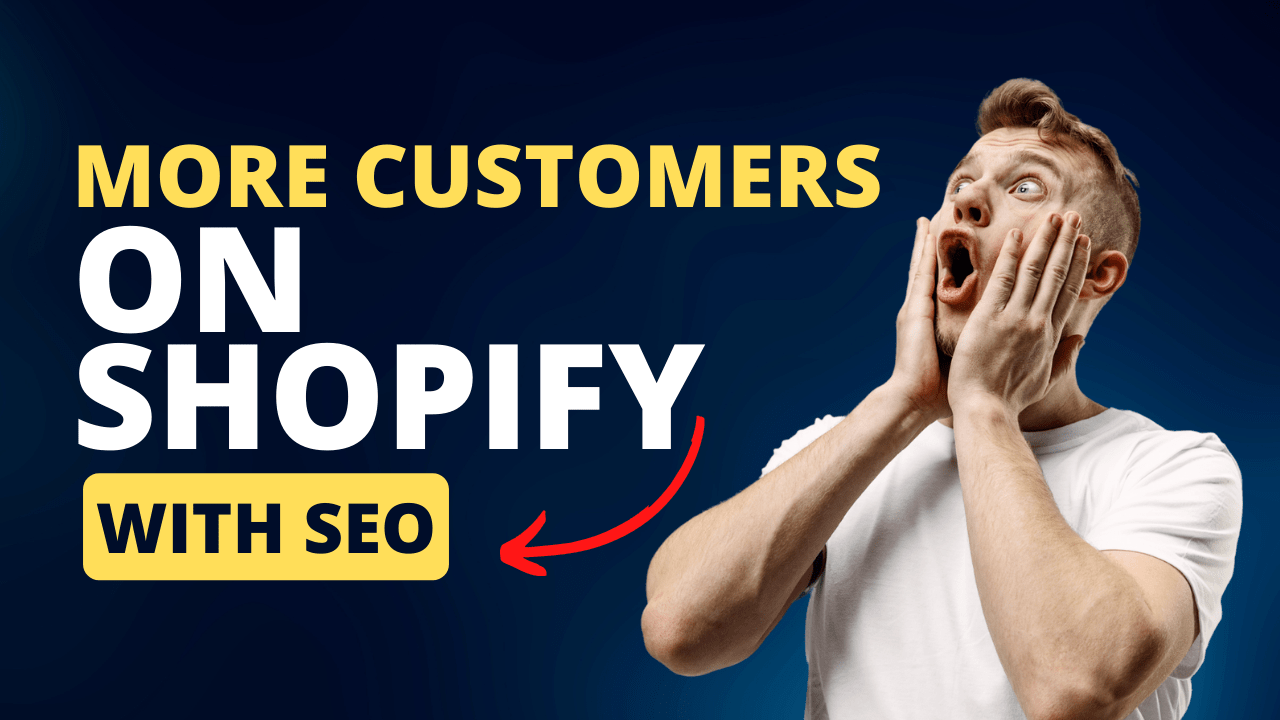At Diginta Marketing, we know that simply having a website is not enough to thrive in today’s digital landscape. That’s why we specialize in providing top-notch digital marketing services to help businesses maximize their online presence and generate traffic. Our experienced team excels in various aspects of digital marketing, from SEO to paid ad campaigns and social media marketing.
We are dedicated to tailoring strategies based on your specific requirements and delivering proven results.
In this article, we will dive into the best practices for your Shopify SEO checklist. By optimizing your website’s content, conducting thorough keyword research, enhancing loading speed, creating unique product descriptions, optimizing URL structure, building quality backlinks, utilizing social media for SEO purposes, implementing schema markup, and monitoring and analyzing performance— you can take your Shopify store to new heights.
So let us guide you through these essential steps to ensure your business succeeds in the competitive online market. With Diginta by your side, you’ll have all the tools you need for success!
Optimizing Your Website’s Content
Now it’s time to take your website’s content to the next level and optimize it for maximum visibility and engagement. You’ll be amazed at how these simple tweaks can make a world of difference in attracting more traffic and converting visitors into loyal customers.

First, let’s focus on optimizing product descriptions for Shopify. Your product descriptions play a crucial role in informing potential customers about your products and enticing them to make a purchase. Make sure your descriptions are clear, concise, and informative. Use relevant keywords throughout the description to improve its visibility in search engine results. Additionally, consider using bullet points or subheadings to break up the text and make it easier for readers to scan.
Next, don’t underestimate the importance of meta tags in Shopify SEO. Meta tags provide brief snippets of information about your web pages that appear in search engine results. Optimize your meta tags by including relevant keywords that accurately describe the content on each page. This will help search engines understand what your pages are about and improve their visibility in search results.
Another essential aspect of Shopify SEO is conducting keyword research. Keyword research involves identifying the words or phrases that potential customers are using when searching for products or services similar to yours. By targeting these keywords in your website’s content, you can increase its chances of appearing higher in search engine rankings. Use keyword research tools like Google Keyword Planner or SEMrush to find popular and relevant keywords for your business.
Lastly, incorporate content marketing strategies into your Shopify SEO efforts for long-term success. Content marketing involves creating valuable and engaging content that not only attracts visitors but also establishes you as an authority in your industry. Consider starting a blog where you can share informative articles related to your products or services. Promote this content through social media channels to drive more traffic back to your website.
By optimizing product descriptions, utilizing meta tags effectively, conducting thorough keyword research, and implementing content marketing strategies, you’ll be well on your way to improving your Shopify SEO.
In the next section, we’ll dive deeper into conducting keyword research to further enhance your website’s visibility and attract more organic traffic.
[Transition sentence] Now that you’ve optimized your website’s content for maximum visibility and engagement, let’s move on to the next step: conducting keyword research.
Conducting Keyword Research
Conducting keyword research is an essential step in optimizing your Shopify website for search engines and attracting relevant organic traffic to maximize your online presence. By identifying the right keywords, you can ensure that your website appears in search results when potential customers are looking for products or services related to your business.

This process involves researching and analyzing popular search terms that are relevant to your industry and target audience. To begin with, start by brainstorming a list of keywords that are relevant to your business. Think about the products or services you offer, as well as any specific features or benefits that set you apart from competitors.
Once you have a list of initial keywords, use keyword research tools such as Google Keyword Planner or SEMrush to gather data on search volume, competition level, and potential ranking opportunities. This will help you prioritize which keywords to focus on in your optimization efforts.
Next, consider long-tail keywords, which are more specific phrases that typically have lower search volume but higher intent from potential customers. These longer phrases may be less competitive and can help you target a niche audience that is more likely to convert into sales. For example, instead of targeting the broad keyword ‘shoes,’ consider targeting ‘comfortable running shoes for women’ or ‘affordable leather dress shoes.’
Lastly, incorporate these researched keywords strategically throughout your Shopify website’s content. Optimize page titles, meta descriptions, headings, image alt tags, and URLs with relevant keywords to improve visibility in search engine results pages (SERPs). Additionally, create informative and engaging content around these keywords in blog posts or product descriptions.
By conducting thorough keyword research and implementing SEO-friendly strategies on your Shopify store, such as using SEO-friendly URLs and utilizing Shopify SEO plugins and apps like Yoast SEO or Plug in SEO Plus, you can boost organic traffic on Shopify and increase the chances of attracting qualified leads who are actively searching for what you offer.
In the next section about enhancing your website’s loading speed, we will discuss the importance of optimizing your Shopify store for faster loading times and provide tips on how to achieve this.
Enhancing Your Website’s Loading Speed
Improving your website’s loading speed is like greasing the wheels of your online business, ensuring a smoother and faster user experience that keeps visitors engaged and coming back for more. Page load speed optimization for Shopify is crucial in today’s fast-paced digital world where users expect instant access to information. Studies have shown that even a one-second delay in page load time can lead to a significant drop in conversion rates. Therefore, it’s essential to prioritize optimizing your website’s loading speed.

One of the first steps in enhancing your website’s loading speed is to minimize the file sizes of your images and other media elements. Large image files can significantly slow down your site’s performance, so it’s important to compress them without compromising their quality. You can use tools like Adobe Photoshop or online platforms such as TinyPNG to reduce the file size while maintaining visual appeal.
Another effective practice for improving loading speed is by leveraging browser caching. When a user visits your website, their browser stores certain elements of your site, such as images and scripts, in its cache memory. This allows subsequent visits to be faster since the browser doesn’t need to download all the content again. You can enable browser caching by adding cache-control headers or using plugins specifically designed for this purpose.
Incorporating these page load speed optimization techniques will not only enhance user experience but also improve your website’s search engine rankings. Search engines like Google consider page loading speed as one of the ranking factors when determining search results. By prioritizing this aspect of SEO, you’re signaling to search engines that you value user experience and are committed to providing high-quality content efficiently.
By optimizing your website’s loading speed through various techniques such as image compression and browser caching, you’re paving the way for increased user engagement and improved search engine rankings. Once you’ve implemented these practices effectively, it’s time to move on to another critical aspect of Shopify SEO: creating unique and engaging product descriptions.
Creating Unique and Engaging Product Descriptions
Crafting captivating and original product descriptions is essential for boosting customer engagement and driving sales. When it comes to your Shopify store, optimizing your product descriptions can make a significant impact on your SEO efforts.
As part of the Shopify SEO checklist for mobile-first indexing, it’s crucial to focus on creating unique and engaging product descriptions that not only describe the features of your products but also connect with your target audience emotionally. By crafting compelling narratives and using persuasive language, you can effectively communicate the value of your products and encourage customers to make a purchase.
In addition to capturing the attention of potential customers, optimizing product categories on Shopify is another important aspect of enhancing your SEO strategy. Organizing your products into relevant categories helps search engines understand the structure of your website and improves the user experience for visitors.
Make sure to use descriptive keywords in your category names and create concise yet informative category descriptions. This will not only help search engines index and rank your pages better but also make it easier for customers to navigate through different sections of your online store.
Customer reviews play a vital role in Shopify SEO for local businesses in New York. Positive reviews not only build trust among potential customers but also contribute to higher rankings in search engine results pages (SERPs). Encourage satisfied customers to leave reviews by offering incentives or simply asking them politely.
Displaying customer reviews prominently on your product pages can significantly impact conversion rates as well. Remember, authentic feedback from real customers adds credibility to your brand and encourages others to choose you over competitors.
As we move forward with optimizing our Shopify stores, let’s now dive into the next step: optimizing our URL structure.
Optimizing Your URL Structure
Enhancing your URL structure is like paving a smooth and scenic road that guides both search engines and customers to effortlessly navigate through your online store. When it comes to Shopify SEO optimization strategies, optimizing your URL structure plays a crucial role in improving your website’s visibility and ranking on search engine results pages (SERPs).
Here are some key steps you can take to optimize your URL structure:
- Implementing structured data on Shopify: Structured data provides additional context to search engines about the content on your website. By implementing structured data markup, such as schema.org tags, you can help search engines understand the purpose of each page and improve its visibility in relevant search results.
- Shopify sitemap optimization: A sitemap is a file that lists all the URLs of your website’s pages. Optimizing your Shopify sitemap involves ensuring that it includes all relevant pages, has clear hierarchies, and is regularly updated. This helps search engines crawl and index your website more effectively, leading to better visibility in organic search results.
- User experience and SEO on Shopify: In addition to improving technical aspects like structured data and sitemaps, it’s important to focus on providing a seamless user experience on your Shopify store. This includes having clean and descriptive URLs that reflect the content of each page, making it easier for both users and search engines to understand what they can expect when clicking on a link.
By following these Shopify SEO optimization strategies for enhancing your URL structure, you can create a more user-friendly website that is also optimized for search engine visibility. Once you’ve optimized your URL structure, you can move on to other important aspects of SEO like building quality backlinks for further boosting your website’s authority in the eyes of both users and search engines.
Next section: ‘Building Quality Backlinks’
Building Quality Backlinks
Building high-quality backlinks is like building strong bridges that connect your website to other authoritative websites, creating a network of trust and credibility in the vast online landscape. Backlink strategies for Shopify SEO play a crucial role in improving your website’s visibility and search engine rankings.

When other reputable websites link to your Shopify store, it signals to search engines that your website is trustworthy and relevant. This ultimately helps drive organic traffic to your site and increases its authority.
To implement effective link building strategies for Shopify stores, start by identifying relevant websites within your industry or niche that have a strong online presence. Reach out to these websites and offer valuable content or resources that they can link back to. Guest blogging on industry-related blogs is also an excellent way to secure quality backlinks.
In addition, make sure you optimize your website’s navigation menus for SEO friendliness. A well-structured menu not only improves user experience but also makes it easier for search engines to crawl and index your web pages. Use descriptive anchor text for internal links within your navigation menus, incorporating keywords related to the specific page you’re linking to.
Utilizing social media for SEO is another essential aspect of digital marketing. By actively engaging with users on platforms such as Facebook, Instagram, Twitter, and LinkedIn, you can increase brand awareness and drive more traffic to your Shopify store. Share valuable content from your website on social media channels and encourage users to share and engage with it. This not only helps generate quality backlinks but also improves the overall visibility of your store in search engine results pages (SERPs).
Utilizing Social Media for SEO
Utilizing social media is a game-changer for boosting your website’s visibility and driving organic traffic. In today’s digital age, social media platforms have become an integral part of our daily lives. By integrating social media with your Shopify store, you can enhance your SEO efforts and reach a wider audience.

One of the key benefits of social media integration is that it allows you to create meaningful connections with your target audience and engage with them on a more personal level. This not only helps in building brand awareness but also drives more traffic to your website.
When it comes to Shopify blog optimization for SEO, social media plays a crucial role. Sharing your blog posts on platforms like Facebook, Twitter, Instagram, and LinkedIn can significantly increase their visibility and reach. It allows you to tap into the vast user base of these platforms and direct them to your website. Moreover, when users engage with your content on social media by liking, commenting, or sharing it, search engines take notice and consider it as a positive signal for ranking purposes.
If you have multilingual websites on Shopify, incorporating social media into your SEO strategy becomes even more important. Social media platforms offer language targeting options that allow you to reach specific linguistic audiences. By creating content in different languages and promoting it through targeted ads on social media, you can attract international customers and drive traffic from various regions.
To maximize the impact of utilizing social media for SEO on Shopify stores, consider implementing advanced tactics such as influencer partnerships or running paid ad campaigns on popular platforms like Facebook Ads or Instagram Ads. These strategies can help amplify your reach and generate even more organic traffic to your website.
In the next section about implementing schema markup in your Shopify store’s SEO strategy…
Implementing Schema Markup
Implementing schema markup in your Shopify store’s SEO strategy can greatly improve your website’s visibility and search engine rankings. Schema markup is a form of structured data that provides additional information to search engines about the content on your website.
By adding schema markup to your Shopify store, you can help search engines understand the context and meaning of your content, leading to better indexing and higher rankings.
One effective SEO practice for Shopify is mobile optimization. With the increasing use of smartphones and tablets, it’s crucial to ensure that your website is optimized for mobile devices. This includes having a responsive design, fast loading times, and easy navigation.
When implementing mobile optimization for Shopify SEO, make sure that your website is user-friendly on all screen sizes and devices.
Another important aspect of Shopify SEO is internal linking strategies. Internal links are links that connect different pages within your website. By strategically placing internal links throughout your site, you can improve the overall structure and navigation for both users and search engines.
This helps search engines discover new pages on your site, understand the relationship between different pages, and distribute link authority throughout your website.
To expand your reach beyond local markets, it’s essential to optimize your Shopify store for international markets. This involves conducting keyword research specific to each target market, optimizing meta tags with relevant keywords in multiple languages, creating country-specific landing pages if necessary, and implementing hreflang tags to indicate language and regional targeting.
Incorporating these effective SEO practices into your Shopify store can significantly enhance its visibility in search engine results pages (SERPs) and drive more organic traffic to your website. However, it’s important not just to implement these practices but also monitor and analyze their performance regularly.
In the next section about monitoring and analyzing SEO performance in Shopify stores…
Monitoring and Analyzing Your SEO Performance
Monitoring and analyzing your SEO performance is crucial for understanding the effectiveness of our strategies and making informed decisions to improve our website’s visibility and search engine rankings. By regularly monitoring key metrics such as organic traffic, keyword rankings, bounce rate, and conversion rates, we can identify what is working well and what areas need improvement.

This data-driven approach allows us to adjust our SEO tactics accordingly, ensuring that we are maximizing our efforts to drive relevant traffic to our website.
One of the main benefits of monitoring and analyzing our SEO performance is that it provides us with valuable insights into how users are interacting with our website. We can see which pages are performing well in terms of engagement and conversions, as well as identify any issues or roadblocks that may be hindering user experience. Armed with this information, we can then optimize these high-performing pages further while addressing any areas of improvement.
By continuously refining our website based on real-time data, we can create a seamless user experience that encourages visitors to stay longer, explore more pages, and ultimately convert into customers.
In addition to improving user experience, monitoring and analyzing SEO performance also helps us stay ahead of the competition. By tracking keyword rankings and comparing them against competitors’ websites, we can identify opportunities to optimize content or target new keywords that will give us a competitive edge. This strategic approach ensures that we are not only maintaining but also surpassing competitors in search engine rankings.
Ultimately, by staying proactive in monitoring our SEO performance, we can continually adapt and refine our strategies to achieve long-term success in driving organic traffic and generating quality leads for our business.
Overall, monitoring and analyzing your SEO performance is essential for optimizing your website’s visibility in search engine results pages (SERPs). By taking a data-driven approach and regularly evaluating key metrics related to organic traffic, keyword rankings, user engagement, conversions rates etc., you can make informed decisions about where improvements should be made within your site structure or content strategy.
This will help increase the likelihood of ranking higher on search engine results pages and driving more relevant, organic traffic to your website. Remember, SEO is an ongoing process that requires continuous monitoring and adjustment to stay ahead of the competition and maximize your online visibility.
Frequently Asked Questions
How can I optimize my website’s content for better SEO?
To optimize your website’s content for better SEO, we employ a comprehensive approach. We conduct thorough keyword research, create compelling and unique copy, and ensure proper on-page optimization. Our data-driven strategies will drive organic traffic and boost your search engine rankings.
What are the best practices for conducting keyword research for my Shopify store?
When conducting keyword research for your Shopify store, it’s important to consider search volume, competition, and relevance. Use tools like Google Keyword Planner and SEMrush to identify high-value keywords that align with your business goals.
How can I enhance my website’s loading speed to improve SEO?
To enhance your website’s loading speed and improve SEO, we thoroughly investigate various techniques and implement the most effective ones. By optimizing images, reducing server response time, and utilizing caching, we ensure a faster user experience to boost search engine rankings.
What are some tips for creating unique and engaging product descriptions that boost SEO?
Some tips for creating unique and engaging product descriptions that boost SEO include using descriptive language, highlighting key features and benefits, incorporating relevant keywords, and addressing customer pain points. Engaging descriptions can improve search visibility and drive conversions.
How can I optimize my URL structure for better search engine rankings?
To optimize your URL structure for better search engine rankings, focus on creating clean and descriptive URLs that include relevant keywords. This helps search engines understand the content of your page and improves user experience, leading to higher rankings and increased organic traffic.
Conclusion
In conclusion, implementing the best practices for your Shopify SEO checklist is crucial to drive organic traffic and boost your online presence.
By optimizing your website’s content with relevant keywords and creating unique product descriptions, you can improve your search engine rankings and attract potential customers.
Additionally, focusing on enhancing your website’s loading speed and utilizing social media platforms for SEO can further enhance your visibility in the digital landscape.
But it doesn’t stop there. Building quality backlinks and implementing schema markup are essential strategies that can help search engines understand your website better and improve its overall performance.
And let’s not forget about the importance of monitoring and analyzing your SEO efforts. By regularly checking key metrics such as traffic, conversions, and rankings, you can identify areas of improvement and make data-driven decisions to refine your SEO strategy.
So, why wait? Take advantage of these proven techniques to optimize your Shopify store today! With Diginta Marketing by your side, you can trust in our expertise to guide you through the intricacies of digital marketing.
Let us help you achieve long-term success by driving targeted traffic to your website and increasing conversions. Remember, when it comes to SEO, attention to detail, strategic planning, and a data-driven approach are key factors that will set you apart from the competition.
Start implementing these best practices now and watch as your business grows exponentially in the online marketplace!






